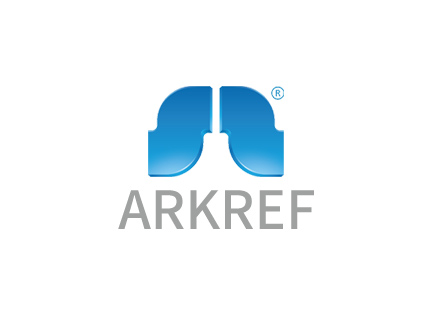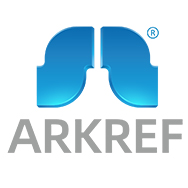What Is an Industrial Chiller and How Does It Work
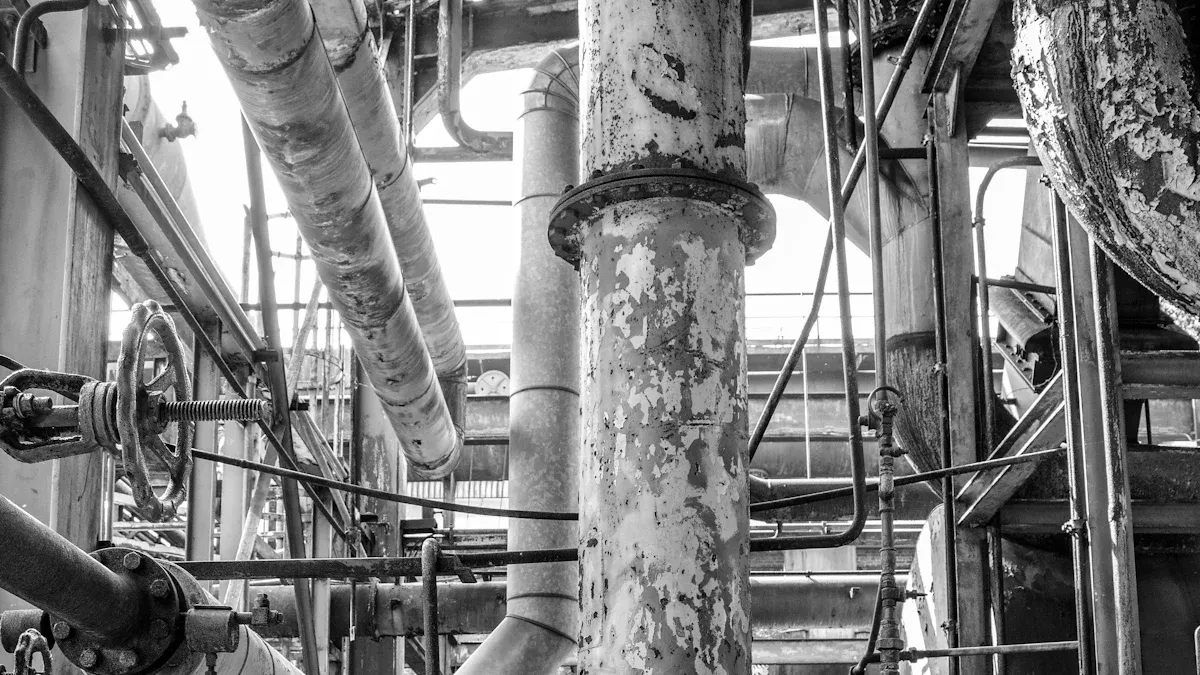
An industrial chiller is a machine that cools liquids. These liquids are used in factories and other industrial work. It helps keep temperatures steady in important tasks like manufacturing. By controlling heat, it stops machines from overheating and breaking.
Industrial chillers improve work by:
Making tools and coolants last longer.
Keeping machines cool to avoid delays.
Helping factories work better with exact temperature control.
For example, chillers like the VEVOR water chiller keep machines running without overheating. This lowers repair costs and increases work output. It is a key tool for keeping things cool in industries.
Key Takeaways
Industrial chillers make liquids cold to stop machines from overheating. This helps factories work better.
Chillers help machines last longer, need fewer repairs, and use less energy.
There are different chillers, like air-cooled and water-cooled, for various factory needs.
Picking the right chiller based on cooling and space improves performance and saves money.
Taking care of chillers regularly keeps them working well and lasting longer, which saves money over time.
What Is an Industrial Chiller?
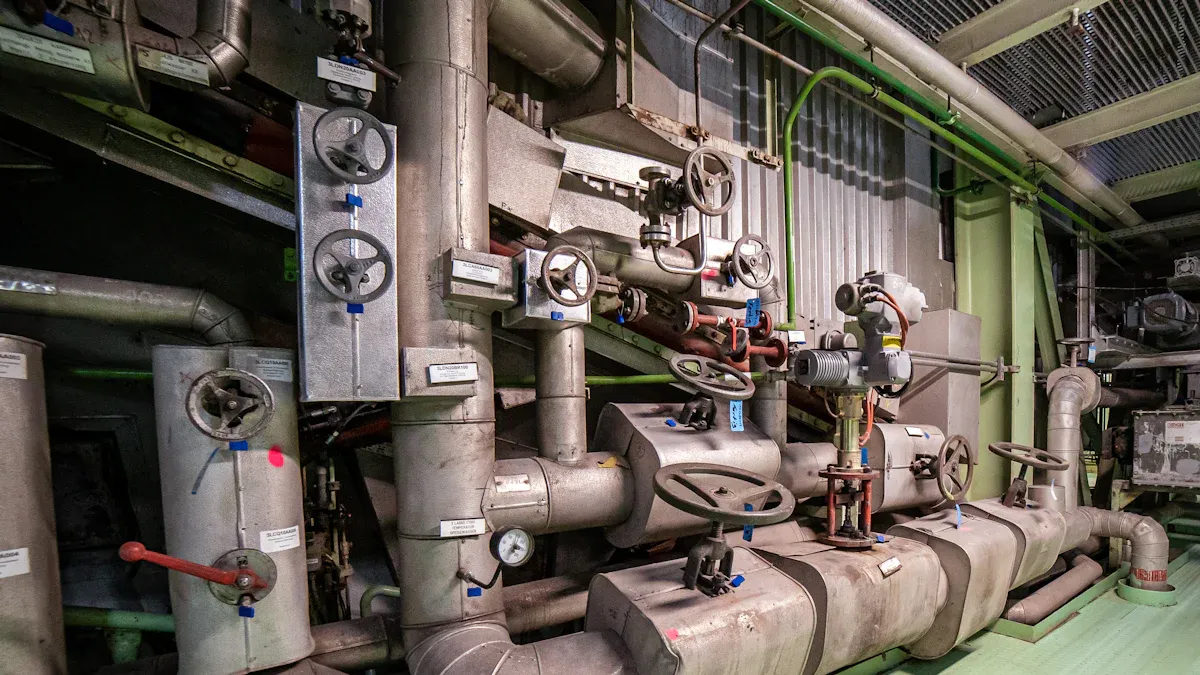
Definition and Key Components
An industrial chiller is a machine that cools liquids. It helps keep temperatures steady in factories and workplaces. These systems are important for jobs needing exact temperature control.
Industrial chillers have several main parts that work together:
Compressor: Pushes refrigerant to make it hotter and under pressure.
Condenser: Moves heat from the refrigerant to air or water.
Evaporator: Takes heat from the liquid, making it cooler.
Expansion Valve: Controls how much refrigerant goes into the evaporator.
Control System: Watches and adjusts the chiller, often with smart screens.
Modern chillers have extra features like frost control and smart tech. Some can work in very cold or hot places, from -45°C to 55°C. They also work well at high altitudes, below 3000 meters. These features make them useful in many industries.
Primary Purpose and Benefits
The main job of an industrial chiller is to keep things cool. It stops machines from overheating and helps them run smoothly. By removing heat, chillers protect tools and improve work quality.
Here are some benefits of using an industrial chiller:
Longer Equipment Life: Cooling machines reduces damage and makes them last longer.
Energy Savings: New chillers use less power but cool very well. Tests like SEPR check yearly performance for accuracy.
Reliable Operation: Features like frost prevention keep chillers working in tough conditions.
Lower Costs: Less downtime and fewer repairs save money for businesses.
Industrial chillers can handle different cooling needs, from 7°C to below -25°C. They are tested and certified by groups like Eurovent, ensuring they meet high standards. This helps you pick the right system with confidence.
How Does an Industrial Chiller Work?
The Cooling Process: Step-by-Step Breakdown
An industrial chiller cools liquids by removing heat in a cycle. It works by absorbing, moving, and releasing heat. Here’s how the process happens:
Heat Absorption: Warm liquid enters the evaporator. The refrigerant takes heat from the liquid, making it cooler.
Compression: The refrigerant turns into gas and goes to the compressor. The compressor raises its pressure and temperature for the next step.
Heat Release: The hot refrigerant moves to the condenser. The condenser uses air or water to remove heat from the refrigerant.
Expansion: The refrigerant passes through the expansion valve. Its pressure drops, so it can absorb heat again.
Cycle Continuation: This process repeats to keep cooling steady for industries.
Cooling towers help remove heat from the system. They use air and evaporation to cool water from the chiller. Better water management improves efficiency and saves resources.
Key Components Involved in the Process
Many parts work together to make an industrial chiller run smoothly. Each part has a specific job in the cooling cycle:
Evaporator: Takes heat from the liquid to cool it.
Compressor: Makes the refrigerant hotter and under pressure.
Condenser: Removes heat from the refrigerant using air or water.
Expansion Valve: Lowers refrigerant pressure to prepare for heat absorption.
Control System: Adjusts and monitors the chiller for best performance.
Cooling towers also help by rejecting heat efficiently. Using tools to monitor water flow can improve system performance and save water.
The Role of Refrigerants in Heat Removal
Refrigerants are key to how an industrial chiller works. They move heat through the cooling cycle. The type of refrigerant affects how well the chiller performs. Studies show oil buildup in refrigerants can lower efficiency by 35%. This increases energy use and reduces performance by 15-30%.
New solutions like NanoRefrigerants improve cooling efficiency. They remove oil from heat exchangers, cutting energy use by 20%. Nanoparticles stop oil from sticking again, keeping the system working well for a long time.
Evidence Type | Description |
|---|---|
Oil Fouling Impact | Oil buildup lowers HVAC efficiency by 35%, raising energy use. |
NanoRefrigerant Effectiveness | NanoRefrigerants improve cooling, cutting energy use by 20%. |
Long-term Benefits | Nanoparticles stop oil buildup, keeping systems efficient. |
Choosing good refrigerants and keeping them efficient helps your industrial chiller work better and saves energy costs.
Types of Industrial Chillers
Industrial chillers come in various types for different cooling needs. Knowing these types helps you pick the best one.
Air-Cooled Chillers
Air-cooled chillers use air to cool the refrigerant. Fans blow air over coils to remove heat. These chillers are great where water is costly or limited. They are simple to set up and maintain, making them ideal for small spaces or outdoor use.
But, they don’t work as well in very hot weather. High temperatures make it harder for them to cool. Even so, they are affordable and widely used in many industries.
Water-Cooled Chillers
Water-cooled chillers use water to cool the refrigerant. A cooling tower removes heat from the water before reuse. These chillers are very efficient and suit large buildings or high cooling needs.
Studies show water-cooled chillers save money. For example:
Month | Savings ($) | Energy Cost Change |
|---|---|---|
June | 1,600 | Big drop |
July | 600 | Similar to June |
These savings prove their efficiency in energy-heavy industries. However, they need more upkeep and a steady water supply.
Absorption Chillers
Absorption chillers work differently than regular chillers. They use heat, like steam or hot water, instead of electricity. This makes them great for places with extra heat or renewable energy.
They are quiet and eco-friendly with fewer moving parts. This means less wear and tear. But, they cost more upfront and cool less than other chillers.
Specialized Chillers (e.g., Screw Chillers, Scroll Chillers)
Specialized chillers like screw and scroll chillers are useful. They are made to meet specific cooling needs efficiently. These chillers work well in different industrial settings.
Screw Chillers
Screw chillers use a rotary screw compressor to cool liquids. The compressor has two screws that fit together to compress gas. This design makes them efficient and good for big cooling jobs.
Why pick screw chillers?
High Capacity: They handle heavy cooling needs for factories or big buildings.
Energy Efficiency: Their design uses less energy, saving money over time.
Durability: Fewer moving parts mean less wear and longer life.
Tip: Screw chillers are great for places needing steady cooling for long hours.
Scroll Chillers
Scroll chillers use a scroll compressor with two spiral parts. One spiral stays still while the other moves to compress gas. This makes them quiet and efficient.
Benefits of scroll chillers:
Compact Design: They are small and light, fitting into tight spaces.
Low Noise: They run quietly, creating a better work environment.
Cost-Effective: They are affordable and need little maintenance.
Feature | Screw Chillers | Scroll Chillers |
|---|---|---|
Cooling Capacity | High | Moderate |
Noise Level | Moderate | Low |
Ideal Applications | Large-scale industries | Small to medium facilities |
Both screw and scroll chillers are dependable cooling options. Your choice depends on your cooling needs, space, and budget. Knowing their features helps you pick the best one for your work.
Applications of Industrial Chillers
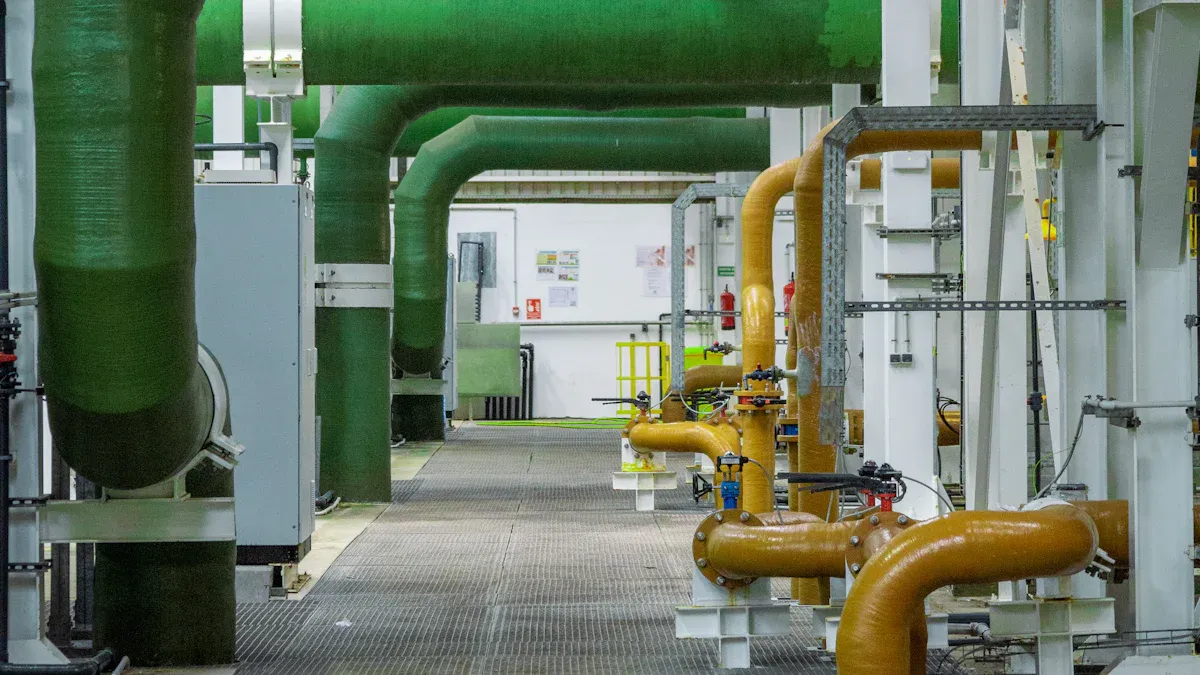
Manufacturing and Production
Industrial chillers are important for factories and production work. They keep machines and materials at the right temperature. For example, in plastic factories, chillers cool molds to keep products shaped well. In metalworking, they stop tools from overheating during cutting or welding.
Chillers also make equipment last longer. They reduce wear by keeping machines cool. This means fewer repairs and lower costs. Chillers also help products stay high-quality, meeting industry rules.
Tip: Use water-cooled chillers for better results in hot processes.
Food and Beverage Industry
Temperature control is very important in food and drinks. Industrial chillers keep items fresh and safe. They cool liquids like milk, juice, and beer during production. Chillers also help with storage and packaging by keeping things cold.
For example, breweries use chillers to cool wort for beer-making. Dairy plants use them to keep milk fresh before pasteurization. Chillers help meet health rules and reduce waste.
Did you know? Cooling properly can save money and stop food from spoiling.
Medical and Pharmaceutical Applications
Medical and drug-making industries need exact cooling. Chillers keep machines and materials safe from heat damage. MRI machines and lasers get hot when used. Chillers cool them to make sure they work well and last longer.
Drug companies use chillers to mix and store medicines. Many drugs need specific temperatures to stay effective. Without cooling, their quality could drop.
Reliable chillers protect equipment and meet strict industry rules.
Data Centers and IT Cooling
Data centers use industrial chillers to keep servers cool. As servers get faster, they produce more heat. Without cooling, this heat can harm equipment and stop operations.
Modern data centers are switching to liquid cooling systems. These systems handle heat better than air cooling. For example, immersion cooling dips parts into special liquids. This cools them faster, saves energy, and improves efficiency.
Here are some current IT cooling trends:
Direct expansion (DX) systems are still widely used.
Hyperscale data centers deal with more heat from packed servers.
Operators want energy-saving methods for AI and advanced computing.
Air cooling is less effective now. Immersion cooling saves space and cuts energy costs. It’s a great option for eco-friendly data centers.
Tip: Upgrade to liquid cooling to save energy and protect your equipment.
Chemical and Petrochemical Industries
Temperature control is very important in chemical work. Processes like distillation create a lot of heat. Industrial chillers keep things cool for safe and smooth operations.
Chillers cool reactors and other tools to stop overheating. Overheating can damage equipment or cause safety problems. For instance, in petrochemical plants, chillers keep flammable materials cool to prevent explosions.
Chillers also help make better products. They keep materials at the right temperature for consistent results. This is crucial in industries where small temperature changes affect quality.
Did you know? Water-cooled chillers work well for big cooling jobs. They are efficient and perfect for large factories.
Picking the right chiller boosts safety, saves energy, and reduces downtime. Always check your cooling needs to choose the best system.
Industrial chillers help keep temperatures steady in many industries. They stop machines from overheating and improve how well they work. New chillers save energy and use eco-friendly refrigerants to protect the environment.
When picking a chiller, check how well it performs. Look at data like MAE, RMSE, and R² to see how accurate it is.
Metric | What It Means | Why It Matters |
|---|---|---|
MAE | Average size of errors | Smaller numbers mean better accuracy. |
RMSE | Square root of average errors | Lower numbers show better data matching. |
R² | How well data fits a model | Closer to 1 means better fit. |
MAPE | Errors shown as percentages | Lower percentages are better. |
Normalized RMSE | RMSE compared to data range | Helps compare errors easily. |
Also, think about features and long-term benefits:
Energy-saving designs lower power use and costs.
Oil-free compressors work smoothly and last longer.
Refrigerants like R-513A are safer for the planet.
Picking the right chiller saves money, works well, and helps the environment.
FAQ
What industries use industrial chillers the most?
Industrial chillers are used in factories, food plants, drug-making, data centers, and chemical work. They keep temperatures steady, protect tools, and boost efficiency.
How can you pick the best industrial chiller?
Think about your cooling needs, space, and money. Air-cooled chillers are good for outdoor use. Water-cooled chillers work well in big buildings. Screw and scroll chillers handle special jobs easily.
Are industrial chillers good at saving energy?
Modern chillers are designed to use less power. They have features like oil-free parts and eco-friendly refrigerants. Picking the right chiller can save money and help the planet.
What care does an industrial chiller need?
Clean parts like condensers and evaporators often. Check refrigerant levels and look for leaks. Watch the control system to keep it running well. Good care makes chillers last longer.
Can industrial chillers work in tough conditions?
Yes, many chillers work in extreme heat or cold, from -45°C to 55°C. New models have frost control and altitude settings, making them dependable anywhere.
See Also
Choosing The Right Industrial Water Chiller Units Effectively
Comprehending The Functionality Of Water Chiller Units
Improving Industrial Cooling Using ARKREF CO₂ Refrigeration Technology
Proven Strategies To Maximize Walk-In Chiller Efficiency
Maximizing Performance Of Chillers And Compressors In ARKREF
